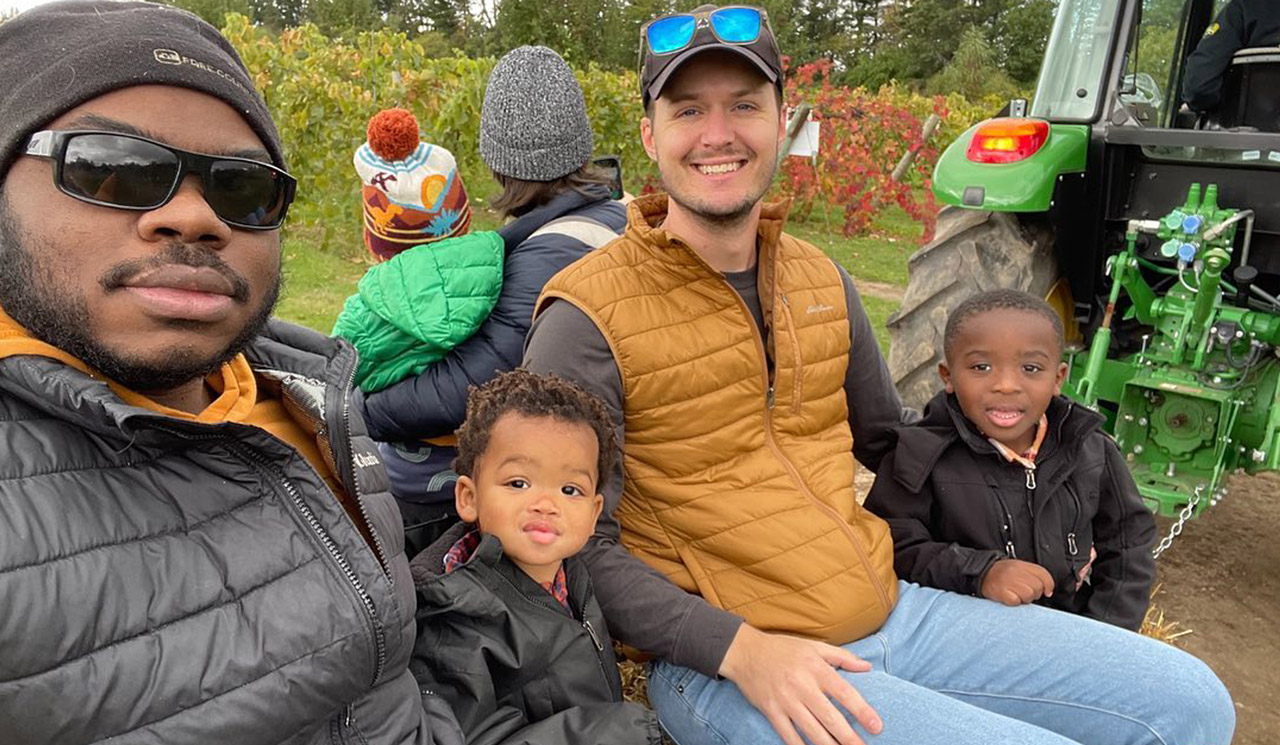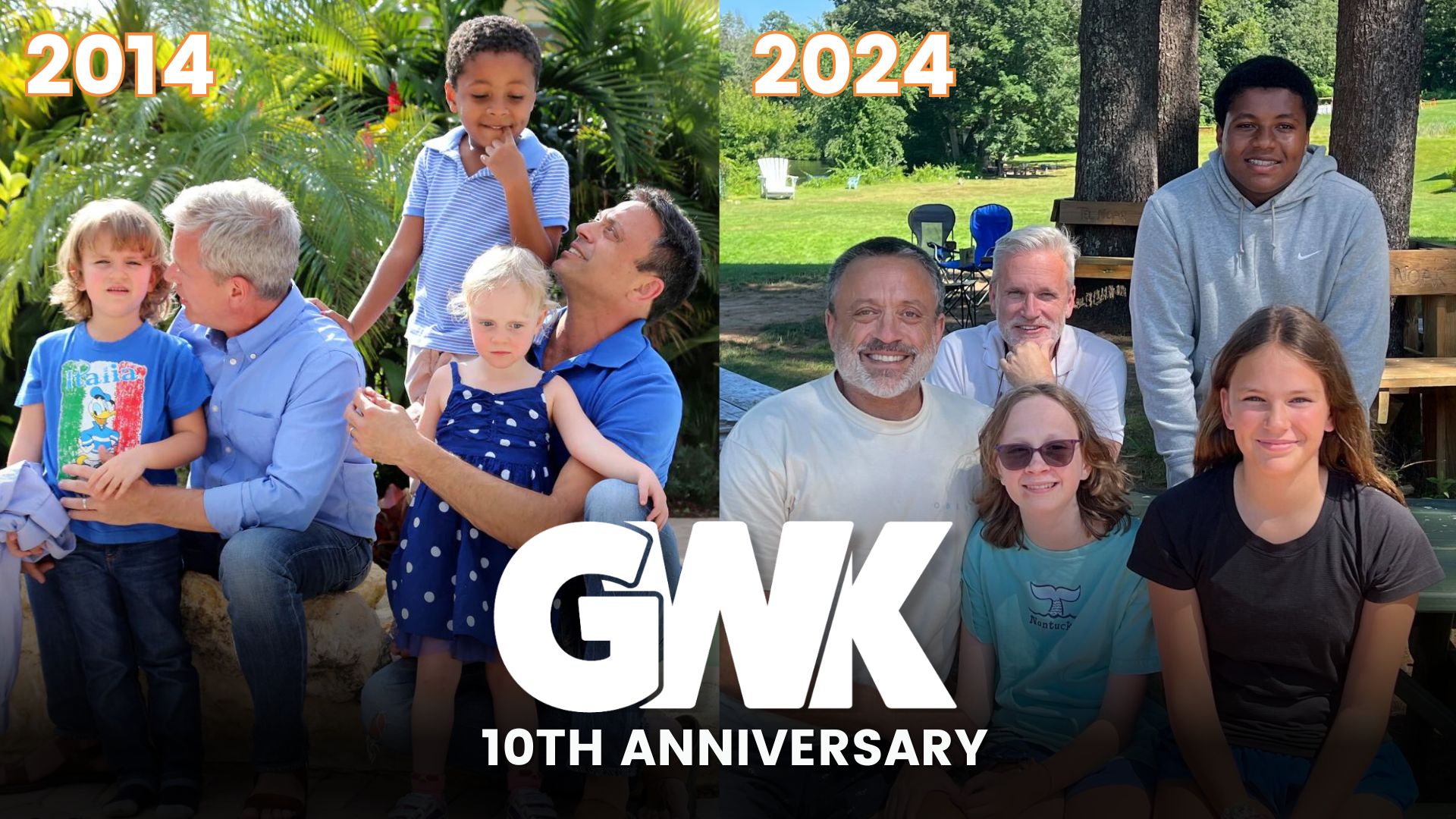Sandy Kaiser and his husband Darrin Carter had one rule when they set out to build a family: They would never own a minivan.
They were 35 and living the stylish life of urban professionals in Toronto. Even though they wanted a large family and knew that it would come with trade-offs, Sandy and Darrin were determined to keep their sporty SUV.
Fear about losing all vestiges of their young, interesting, adventurous selves can creep into any prospective parent’s mind. And having five or more children poses additional challenges: making it work financially, juggling all the kids’ competing schedules, managing a large household.
But it’s not the case that each additional child is as difficult as the first, and having a herd has its perks. Parents of large families report higher life satisfaction overall than those of just one or two kids, according to a recent study by Dr. Bronwyn Harman, researcher at Edith Cowan University in Perth, Australia.
She found that parents of larger families find social support within the home – such as older kids helping with younger kids and children playing together – outweighs the inevitable increased chaos and gives parents a strong sense of life satisfaction.

Sandy Kaiser and Darrin Carter
Hometown: Halifax, Nova Scotia
Kids: Wolfgang (15), Reichen (13), Michaela (11), Sophie (10) and Ava (7)
We’ve enlisted a diverse group of parents – all of whom have five or more kids – to divulge their secrets to thriving – or, some days, just surviving – as a big family.
Secret 1: Trade in your sporty car
In the 15 years since they made the minivan promise, Sandy and Darrin have adopted five kids and moved to the country in Nova Scotia. They now own a minivan – and a travel trailer for family camping trips.
Their kids range from age 7 to 15 now. When they were younger and fewer, the family traveled each summer. But as the family grew, so did the cost of vacationing.
“It was just getting really, really expensive because we need a minimum of two hotel rooms,” Darrin says. So, this year, they changed their strategy and bought the small travel trailer.
“It was never something that was on our radar,” Darrin says. Trailer “clamping” allowed them to take mini-vacations most weekends over the summer without compromising on comfort – or breaking the bank.
Rey Montes and Mike Roach, who have seven adopted kids in Monterey, California, travel with their kids in a motorhome. For shorter trips, they’ve taken the back seats out of a 15-passenger van to fit strollers and snack coolers.
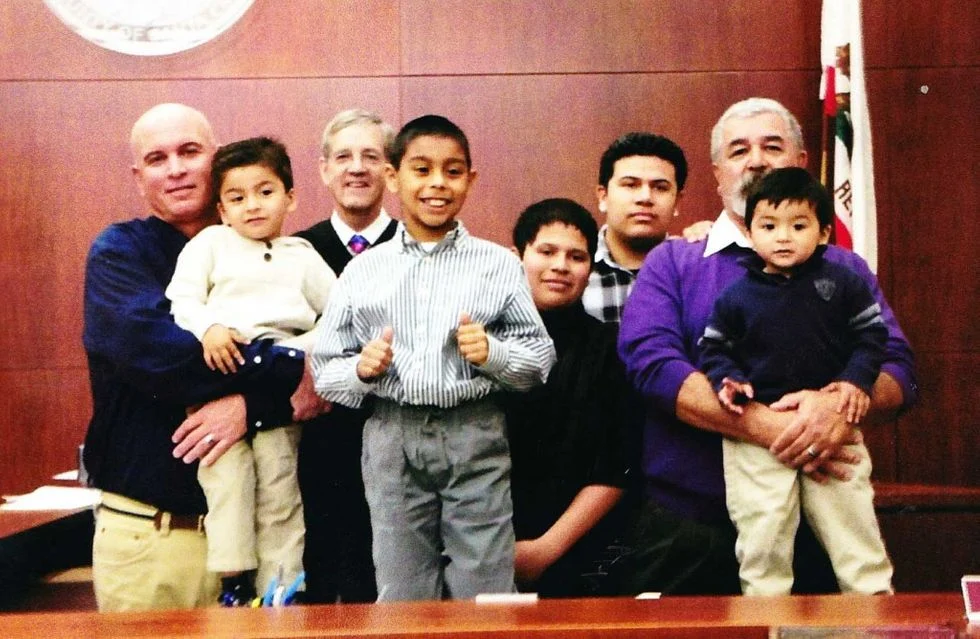

Rey Montes and Mike Roach
Hometown: Monterey, California
Kids: Nicholas (17), Daniel (13), Abel (9), Abram (3) and Adam (2)
It’s not glamorous, but finding economical ways to get around allows them to travel in-state each weekend over the summer and do overnight stays on a budget.
Secret 2: Divide and conquer
Sandy and Darrin tackle the mornings with zone coverage. “We have our upstairs dad and our downstairs dad in the morning,” Darrin says.
He (Darrin) gets up at 5:00 a.m. for his work-out, then makes breakfast for the whole gang. Sandy gets going at 6:00, waking up all the kids and sending them downstairs dressed with teeth and hair brushed by 6:15.
While the kids eat breakfast, Sandy makes beds and tidies the bathroom after them.
Rey and Mike from Monterey split up the mornings similarly. With his seven adopted kids ranging in age from 2 to 17 and attending different schools, Rey, who is retired and has four adult biological children, spends a good part of his day schlepping kids from place to place. The official spokes-parent of the family, he also takes the kids to all their doctor’s appointments and attends school conferences.
Mike takes care of cleaning and other housework – they’re proud that their house doesn’t look like a small sports team and a dog reside within – and Rey cooks.
The roles look slightly different in each family, but each parent we interviewed could rattle off the breakdown of family responsibilities without a single pause to remember who does what.
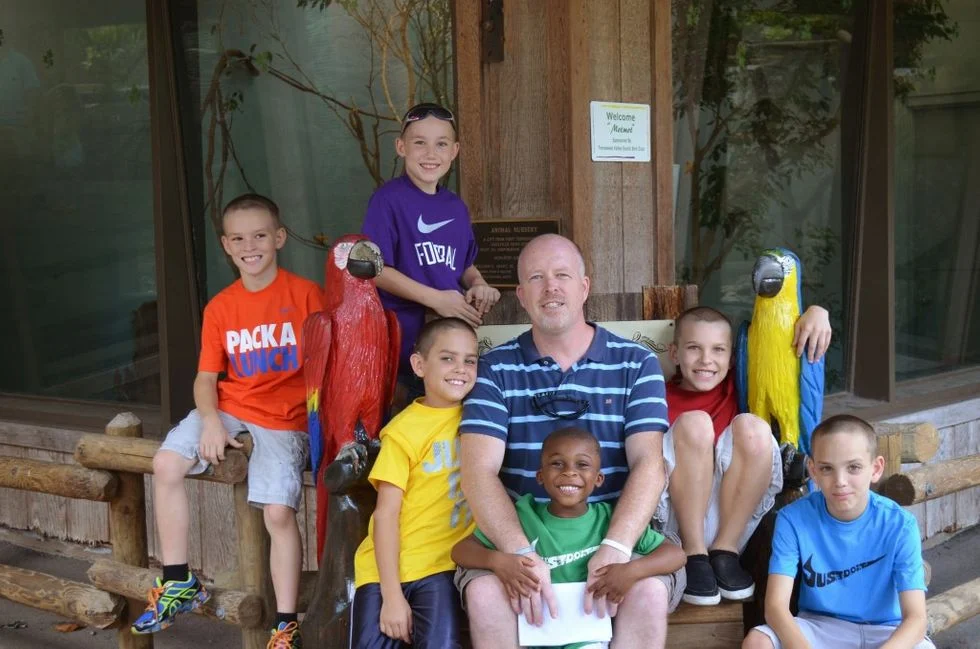

Simon Flatt
Hometown: Gainesville, Florida
Kids: Zachariah (12), Elijah (11), Logan (11), Landon (10), Blake (9) and Jaxon (6). Foster kids: Thomas (9) and Vera (7).
Secret 3: Get organized – Really organized
Knowing the drill isn’t just helpful for parents with lots of kids – also teaching kids their role in the family’s day-to-day keeps the chaos manageable. Simon Flatt, single dad of six adopted and two foster kids in Florida, uses a color-coding system to wrangle everything from the kids’ stuff to their chore schedule.
“Their bedding, towels, toothbrushes, school supplies, beach towels, flip flops, goggles, and pails, etc. are in their individual colors. For items that I can not find in their color, I use colored duct tape,” he says. “It not only helps me know who left their towel on the floor, it gives them a sense of ownership.”


He maps out their chores, including feeding the animals on their rural Florida property, saying prayer and making dad’s coffee (which he added because they fought over who gets to make it), on a weekly calendar brightly colored to indicate each child’s daily assignments.
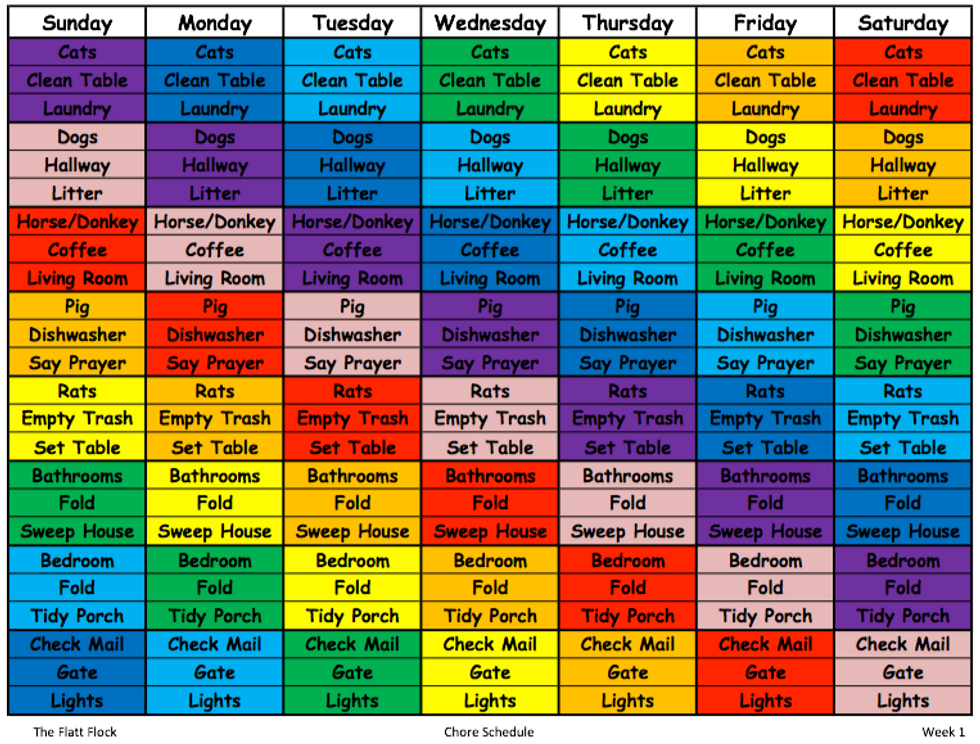

At Charles Paragian and Daniel Sernekos’ New Jersey house, the kids are so used to the daily schedule, they don’t even need reminding.
“Even my kids who are in high school, they’re so used to it they just go to bed at 10:00,” Charles says. “Neko’s 7. He knows as soon as the clock rolls to 7:30, he gets up and he’ll say, ‘Okay, time to take a shower.’”
Secret 4: Find inexpensive ways to play
Darrin and Sandy’s family lives in the country, so structured kids’ activities aren’t as readily available. They don’t envy their city-dwelling peers who spend weekdays rushing from activity to activity and weekends juggling tournaments and performances.
“We live on a lake so the kids swim all summer, which costs us nothing,” Darrin says. They also challenge their kids to entertain themselves around the house. “We challenge our kids all the time to stay active, find something to do, read a book, go on your computer.”


Though driving their kids to a friend’s house can mean long trips in the car, that’s rare – their house is the center of the kids’ social lives. Kids on the block and from farther away love to come over and play.
“Because there are five of them, interestingly enough, they’re not always looking for playdates or asking to have friends come over. As much as they squabble, they really are a tight-knit group,” Sandy says.
Rey and Mike in California opt to get out of town when taking the kids out of the house. Even for a financially comfortable family, visiting the tourist-oriented Monterey Bay Aquarium and other local places can get pricey when you’re paying for seven.
Instead, they buy season tickets for the whole family to an affordable theme park about 45 minutes away and go there often during the summer and go to the aquarium only when they run a special for locals.
Secret 5: Tap into your resilience
Sandy and Darrin in Nova Scotia were the first of their friends to adopt more than two kids. They still don’t know many families, gay or straight, that are like theirs.
Charles and Daniel from New Jersey sought community both among gay men and among straight parents of their children’s classmates to no avail.
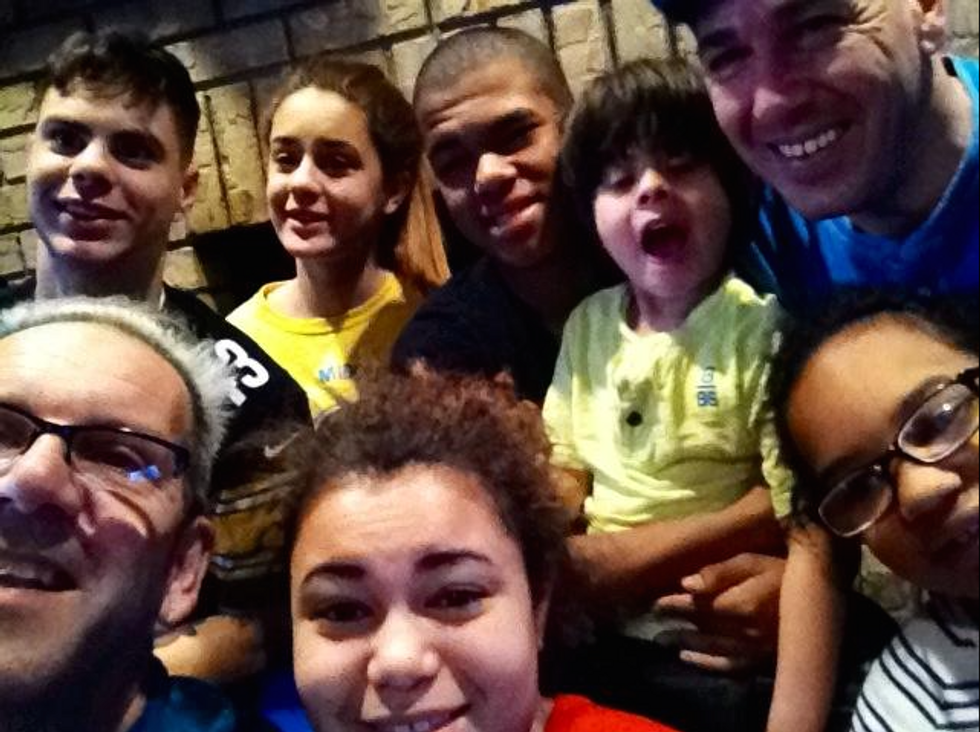

Charles Paragian and Daniel Sernekos
Hometown: Little Ferry, New Jersey
Kids: Raymond (21), Maggie (18), Kayla (17), Justin (16), Jayda (13) and Nekos (7)
“To be honest with you, all of the years that we marched in the gay pride parade, most of the families didn’t want anything to do with us,” Charles says. “All of our single friends ran for the hills.” Their friends who were couples didn’t stick around, either.
“We really tried because we would have loved to have friends who were adults,” he says.
Over the years, they tried to connect with parents through the kids’ school, but never felt the friendships were sincere. “We became almost like the token gay couple for them and I don’t like that. That’s not who I am,” Charles says.
Now that it’s been more than 15 years, Charles can joke about it, speculating that maybe his pals didn’t want to be on the hook for so many Christmas presents – but he’s not entirely sure what the real reason is that their family has struggled to find a social support system.
“I just know that we’ve been on our own, and it’s been fine,” he says. “We’ve been fine without it. If anything, it’s made us a tighter-knit family.”
All of the families interviewed for this story echoed this struggle to find support from family and friends. But that’s only half the story – though that social element is lacking, all the parents we spoke with feel well-connected with their nuclear family.
We briefly touched on scholarly research of large families early on in this article. Parents in large families find more social support at home than those with fewer children, says Dr. Bronwyn Harman, researcher at Edith Cowan University in Perth, Australia. In fact, parents with four or more kids rank highest in overall happiness when compared with other family types.
She interviewed hundreds of parents over five years for her recently released study of how resilience, social support and self-esteem impact parents’ happiness.
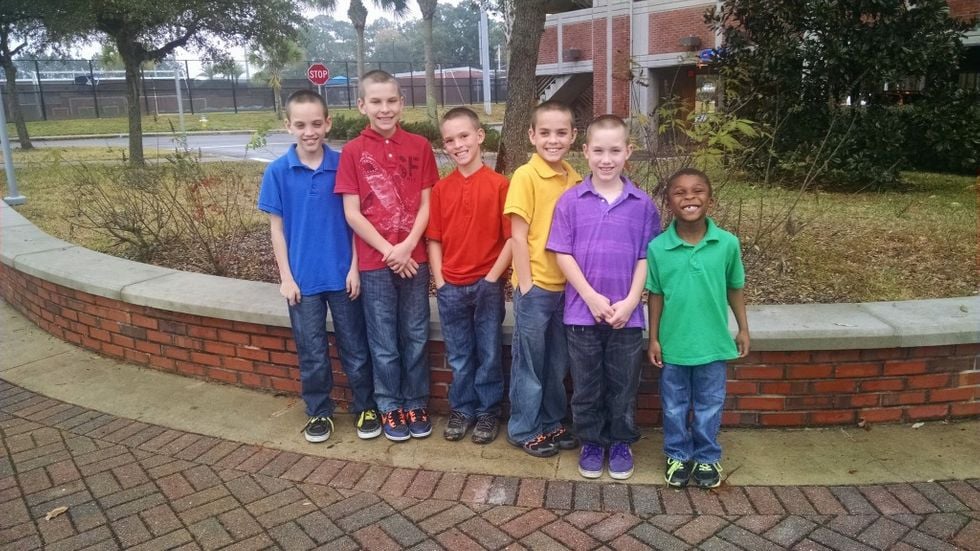

But outside the home, she says, the parents reported negative comments from strangers, like “Are they all yours?” or “Boy, you’ve got your hands full.” She says this may stem from cultural norms permitting strangers to comment on other’s parenting, from what they’re feeding their kids to how they discipline them.
“I think comments like the ones I have outlined about large families is part of that dialogue, where people think it is okay to ask personal questions, make assumptions, or state the obvious,” she says.
Dr. Harman found LGBT parents with any family size rank second highest in overall happiness. Resilience contributed to their happiness more than the other factors measured in the study, perhaps due to the parents having faced homophobia and discriminatory laws individually and in the process of becoming a family.
“When confronted by negative public perception, parents who identify as LGBT who are more resilient – the ability to draw on internal and external resources to cope with adversity – are also likely to be less affected by that perception, and therefore also report greater life satisfaction,” she says.
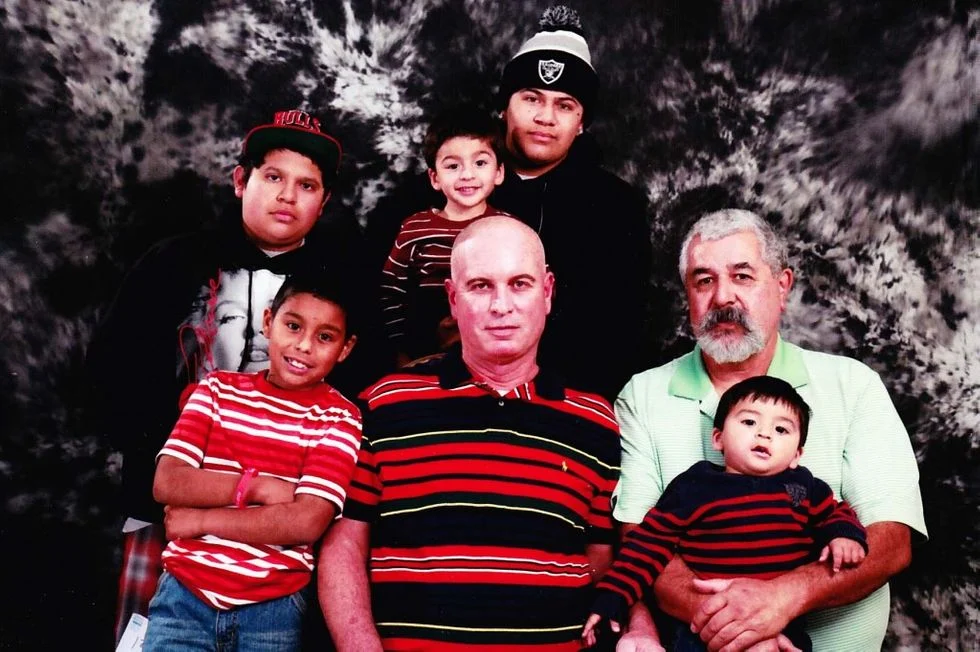

As in the case of the larger families she studied (in which she focused on mothers), perceived social support did not contribute to the LGBT parents’ happiness.
Perhaps looking at the two study groups together can give us hints for why gay families with many children function so well despite often lacking the connections so vital to family health: Gay parents are a resilient bunch, making them well-equipped for the likely decrease in outside support they’ll experience when building a large family.
Secret 6: Be fierce
Simon Flatt, single dad of eight in Florida, knows all about resilience. Most of his kids suffer from trauma and behavioral disorders after severe abuse. One has a physical impairment. In the small town where he raises his kids and trains other potential foster and adoptive parents, he feels like he has to work extra hard to ensure his kids are getting the care they need.
His strategy? Get fierce and get help.
“At times it feels like I am “That Gay Guy with the Group Home,” he says. “I think my kids’ school and the foster agency and community respect me, but I feel I had to really prove myself by my advocating for all my children’s needs.”
He pays a caretaker to drive his foster kids to meet him at their therapy appointments so he can squeeze in a couple more hours of work. Another caretaker, Ms. Pat, cares for two of his boys before and after school, and all eight children while he teaches his training class.
And he pays it forward: Even though he has more than enough to handle, he occasionally takes care of other parents’ foster kids so they can take a break.


He works hard, but knows what support is available to him through the foster care system. In Florida, he is offered a small stipend for each of his foster care children and an adoption subsidy that’s about 80% of that stipend. Since his kids all have special needs, they get extra support. And they qualify for Medicaid until age 18. His kids under 12 qualify for reduced daycare rates.
Though he says most foster kids in the state don’t make it to college, those who do actually receive tuition paid in full at any state school.
Benefits for foster and adoptive kids range from state to state, as do laws and attitudes toward same-sex couples in the adoption process. Advocating for your family starts with making your voice heard among the many families seeking to adopt.
Darrin and Sandy from Nova Scotia called their social worker every week when they first set out to adopt.
“If you’re going through an adoption service, don’t just wait for someone to reach out to you. Be the squeaky wheel that gets the grease,” Sandy says.
Secret 7: Work with what your kids have got
Particularly when the kids span a wide age range, a one-size-fits-all parenting strategy simply won’t work. Each child comes with distinct personality quirks, needs and strengths. Tailoring discipline to each kid’s style may seem overwhelming, but it means less struggle – and the chance to benefit from each child’s ability to contribute to the household.
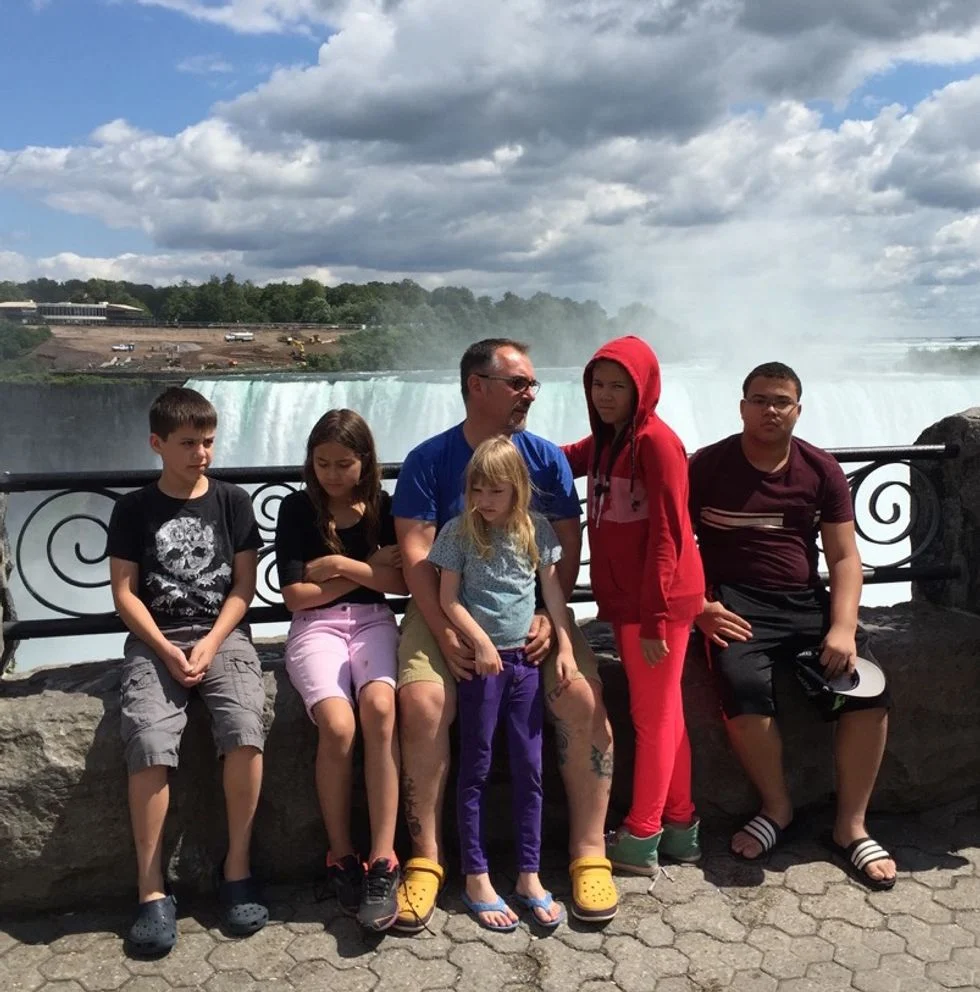

“People come over for supper at our house and they leave with a headache,” says Darrin from Nova Scotia. But what feels chaotic – possibly insane – to others is just, well, life for their family.
“It’s not overwhelming for us,” he says.
Wolfgang, 15, rarely cleans his room, but when Sandy travels for business, he fills his dad’s role in helping care for the younger kids.
Reichen, 13, goes to a private school, riding into town with Darrin each morning to be dropped off at school on Darrin’s way to work. Switching to a dedicated school for kids with learning disabilities helped him do well in school and improved behavior issues, but he can still be tough to talk to about behavior at home.
“He doesn’t understand consequence,” says Darrin. That renders their go-to disciplinary strategy – taking away privileges – useless. “A lot of times, he just has to go into his bedroom until he cools off.”
Those conflicts can be taxing for Reichen’s dads, but they’re quick to point out where he shines. For example, Reichen is a great help around the house: He loves things clean and tidy, so he never needs nagging, and he picks up the lawn after the dog.
Secret 8: Say “I love you”
“The best advice I can give with a large family is that you can’t raise them all the same,” says Charles from New Jersey. Each has [his or her] own personality. Each responds to [his or her] own kind of discipline, praise.”


Even though four of Charles and Daniel’s six children are biologically related to one another, none is even remotely alike and each has unique struggles. All of their children’s birth mothers used drugs during pregnancy, and some were in the foster care system before being adopted by the dads.
Individualized approaches to discipline go a long way for kids with tough backgrounds, but one thing remains true for all Charles’ kids: They need regular reminders that they are loved.
“The most important thing that we had to keep saying is, ‘We love you and we’re not giving up and that’s it. We’re together now. This is our family.’ You can’t take for granted that you love them – and gay people relate to that more, I think.”



